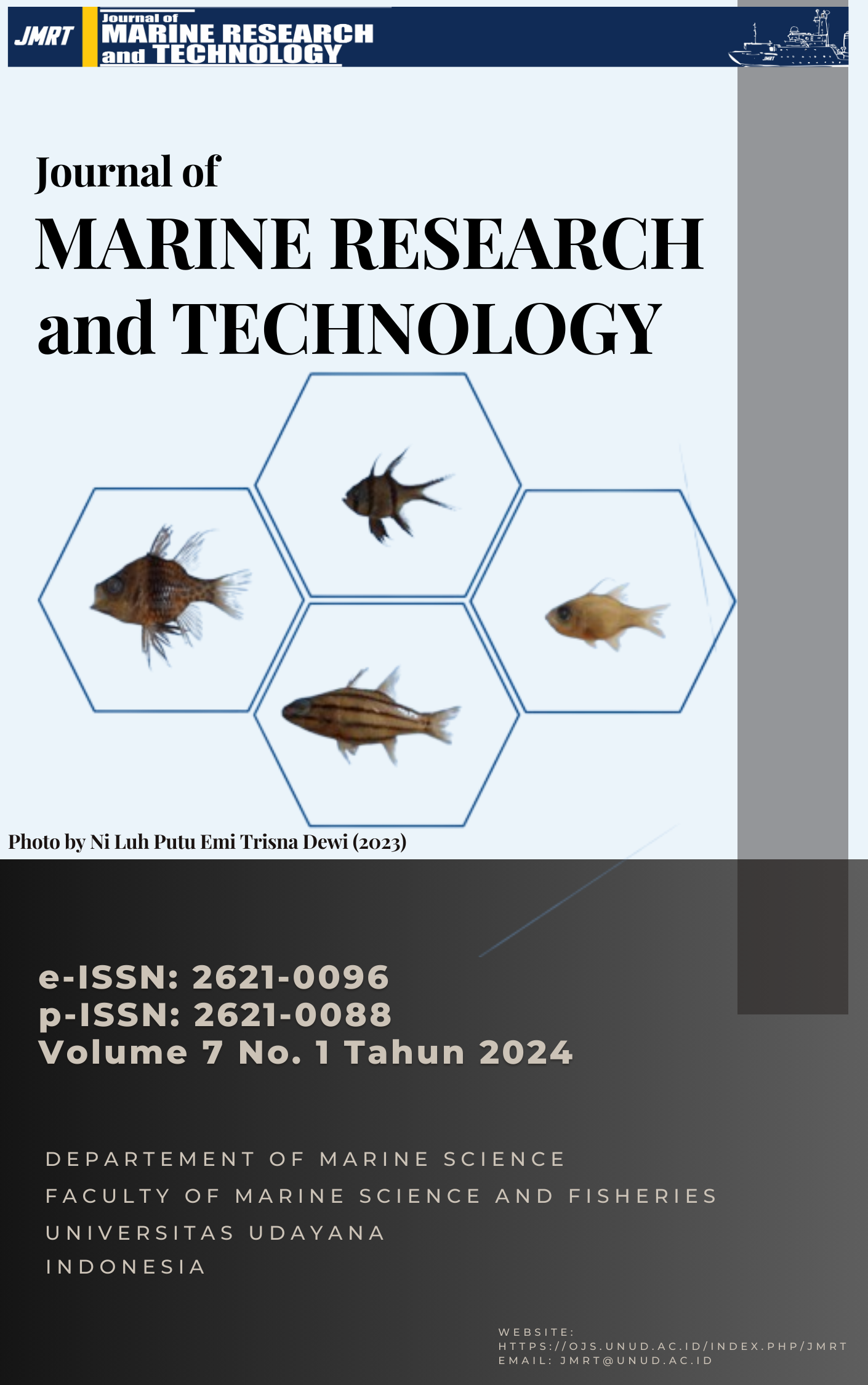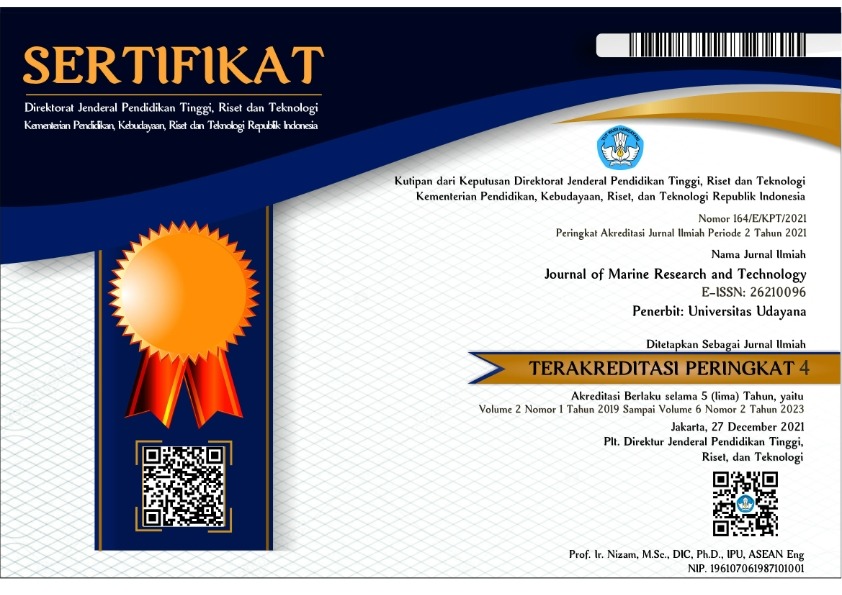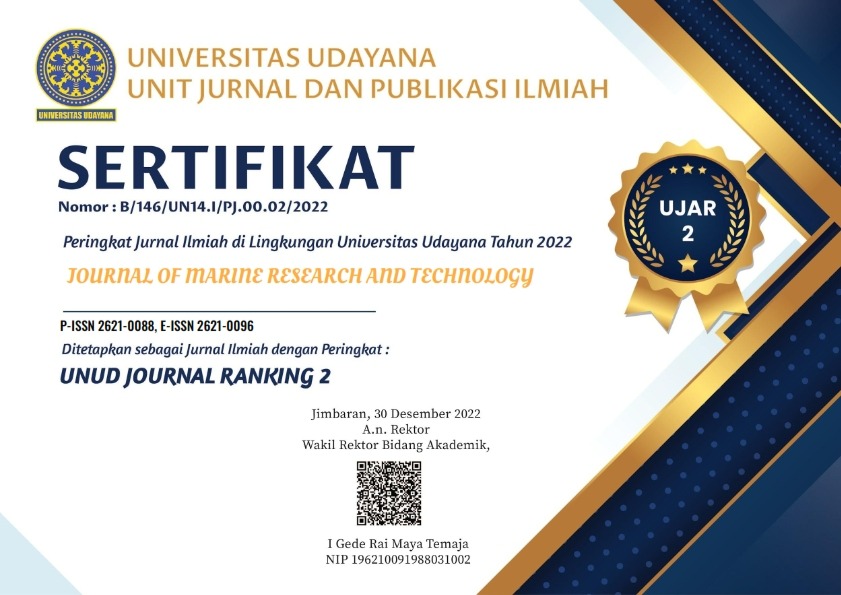Analisis Isi Perut Ikan Apogonidae di Teluk Gilimanuk, Bali
Copepoda; Ikan kardinal; Pemakan plankton; Pterapogon kaudernii.
Abstract
The types of natural food consumed by fish can vary according to their species and its age level. The purpose of this study was to determine the types of organisms feed by Apogonidae fishes by observing their gut contents and to determine the type of feeding habits of these fishes. This research was conducted at two sampling sites within Gilimanuk Bay, Bali. Specimen collection was conducted in the morning (07.00 am) using a scoop net while scuba diving. We successfully collected 32 individual Apogonidae, which consist of eight species. Each sample was dissected and the contents of the stomach were removed from the esophagus to the intestine. The stomach contents were preserved using 4% formalin, and then the samples were observed under a binocular microscope with 40x magnification. The results showed that the highest composition of food species found as the main food was the Copepod of 59.86% which was fed by Sphaeramia nematoptera, Cheilodipterus artus, Fibramia thermalis, Pterapogon kaudernii, Zoramia leptacantha, Rhabdamia gracilis, and Ostorhichus hoevenii, Bacillariophyceae by 31.97% were feed by S. nematoptera, C. artus, O. hartzfeldii, F. thermalis, P. kauderni, Z. leptacantha, R. gracilis, and O. hoevenii. The other class of plankton only made up a small part of the food composition of the Apogonidae fishes, which is as much as 8.16%. Based on our results, we conclude that Apogonidae fishes in Gilimanuk Bay were plankton feeders where all the food found comes from phytoplankton and zooplankton organisms.
Downloads
Copyright Notice
The copyright to this article is transferred to Journal of Marine Research and Technology (JMRT). The copyright transfer covers the exclusive right and license to reproduce, publish, distribute and archive the article in all forms and media of expression now known or developed in the future, including reprints, translations, photographic reproductions, microform, electronic form (offline, online) or any other reproductions of similar nature.






